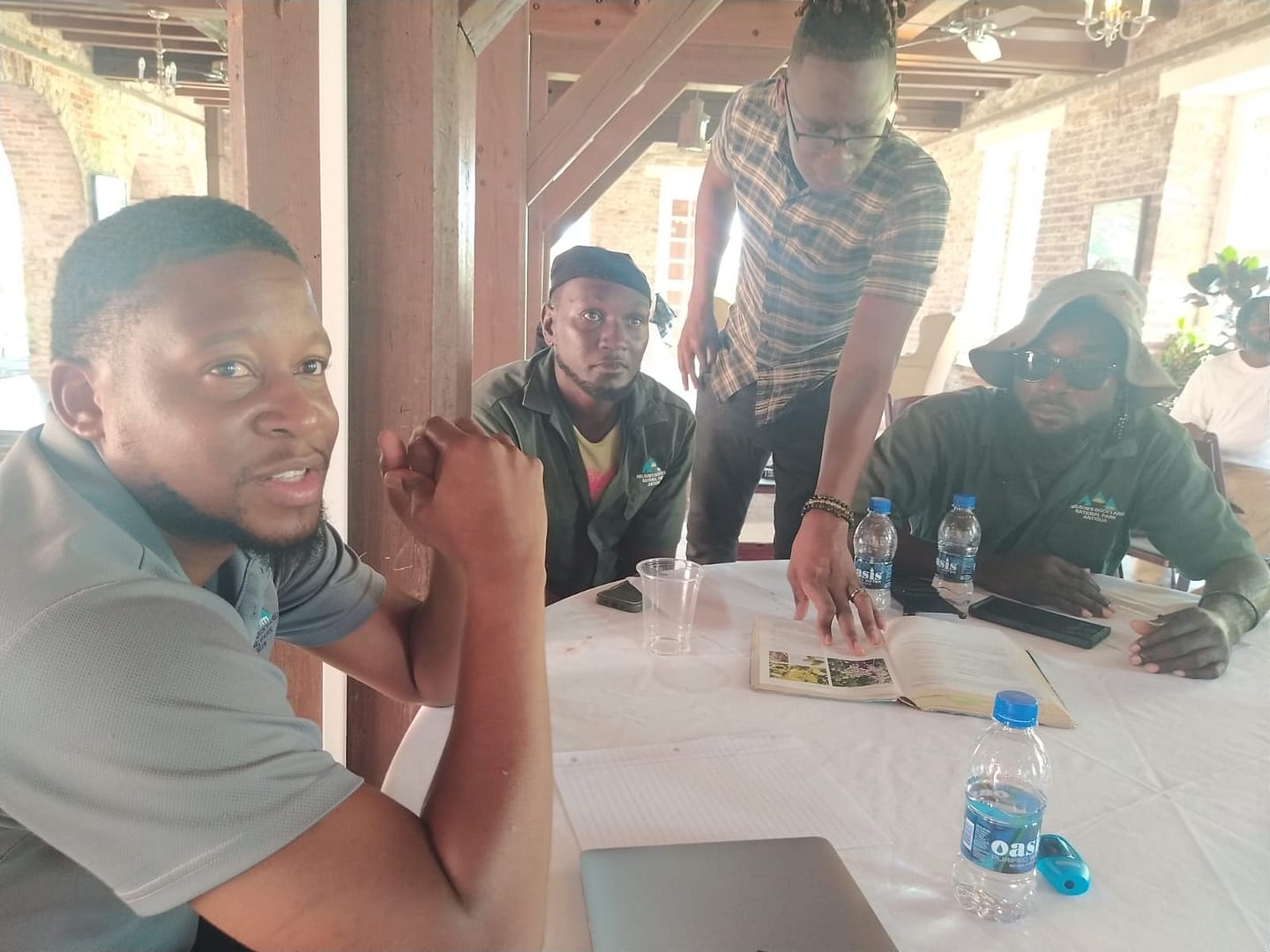
National Parks and the Ministry of Agriculture Conducted Gardening and Landscaping Training by Brent Simon
Staff of the National Parks Authority and Grounds Department recently benefited from a gardening and landscaping training workshop, held in collaboration with the Plant Protection Unit and the Forestry Division of the Ministry of Agriculture. To accommodate staff schedules, the workshop was repeated on the second day for a separate group of employees, the session was conducted on October 21 and 22. The main objective of the training was aimed to strengthen the participants’ practical and technical understanding of sustainable landscaping and plant care.
Presentations were led by Mrs. Camellia Wallace-Tonge and Mr. Sebastian Cochrane of the Forestry Department and Mr. Jahmol Colbourne represented the Plant Protection Unit.
The Forestry Department’s segment focused on key botanical and propagation techniques, including plant taxonomy, plant identification, and the importance of species selection in landscaping led by Mrs. Wallace-Tonge.
Participants also gained hands-on experience in grafting and air layering, two essential methods used to improve plant survival and reproduction from Mr. Sebastian Cochrane a Forestry Technician.
Meanwhile, the Plant Protection Unit addressed issues of pest and disease management, highlighting topics such as common plant pests and diseases, invasive species, identification methods, and practical approaches to pest control.
Mr. Colbourne emphasized on the need to prioritize natural pesticides, biological control, and pest trapping before resorting to chemical options, noting that chemical pesticides often harm beneficial insects like ladybugs that naturally feed on pests such as aphids.
The participants were also trained on the proper use of personal protective equipment (PPE) — including chemical-resistant suits, gloves, respirators, face and eye protection, and rubber boots — to minimize chemical exposure and prevent long-term health risks.
Other discussions examined the cost-effectiveness of organic versus synthetic fertilizers, with organic options proving more sustainable by improving soil health and supporting two to three crop cycles before reapplication, compared to synthetic fertilizers that require multiple applications per cycle.
Attention was also drawn to the importance of cleanliness and monitoring, as pests can easily be transported on clothing, equipment, or vehicles, leading to new infestations in other areas. In severe cases, such as palm trees infected with Lethal Yellowing or bud rot, immediate removal and burning were recommended to prevent the spread of disease.
The collaborative training reflected a broader effort to enhance landscape management practices across government departments while promoting inter-agency cooperation and environmental responsibility.
Advertise with the mоѕt vіѕіtеd nеwѕ ѕіtе іn Antigua!
We offer fully customizable and flexible digital marketing packages.
Contact us at [email protected]

















